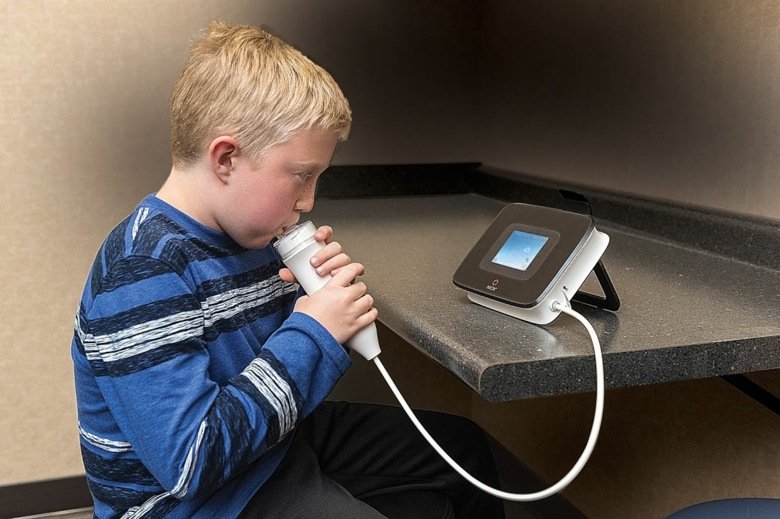The world’s first nitrogen monoxide test for asthma sufferers
Aerocrine developed the world’s first nitrogen monoxide test for asthma sufferers. Today, the product is used around the globe to monitor asthma symptoms and adjust medication accordingly.

However, it all started with a drop of fluid that became stuck in a tube. The plastic tube was connected to an instrument for measuring the level of nitrogen monoxide in different liquids.
“When I put the tube to my lips and blew to remove the drop, we noticed a reading on the nitrogen monoxide gauge. It was as simple as that – blind luck,” says Magnus Persson, MD, PhD, associate professor at Karolinska Institutet. In the early 1990s he was a researcher at Karolinska Institutet following training as a physician at, among other colleges, Karolinska Institutet and Harvard Medical School.
Initially, there was doubt over the discovery in terms of whether exhaled air contains more nitrogen monoxide than inhaled air, and the research group looked for different flaws in the method. But the team soon understood that this track offered something new.
“We realized that this effect had not been described before. And because everyone in the research group was a doctor, it didn’t take long for us to ask: did the levels change in the event of illness?”
When basic research has a clinical impact
Two different research groups, led by professors Lars Gustafsson and Kjell Alving, combined to start Aerocrine.
“This is a good example of basic research at Karolinska Institutet that has become a product used in lung clinics worldwide. It also forms the basis for how we identify, monitor and treat asthma,” says Persson.
About 10 years after the company was founded, British company Circassia Pharmaceuticals made a bid for Aerocrine, valuing it at approximately SEK 1.6 billion. But since then, Persson has moved on. He now devotes his time to board work with Danish, Swedish and US companies. But among the things he enjoys most is working with the research company Attgeno. The researchers behind Attgeno come from the same group at Karolinska Institutet who started Aerocrine.
“We’re developing a new drug based on the same research behind Aerocrine. As a doctor, I can help one patient at a time. But if you participate in the development of a new drug, you can help thousands of people.”
